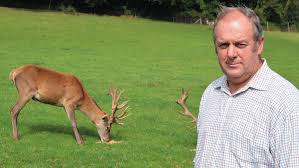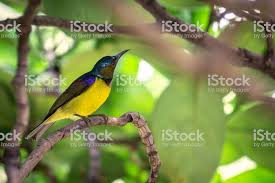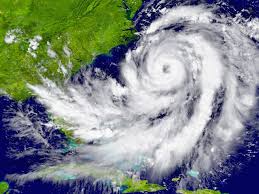DỊCH HOÀN THIỆN ĐỀ THI IELTS READING VÀ GIẢI THÍCH ĐÁP ÁN:
Deer Farming in Australia
Paragraph A
Deer are not indigenous to Australia. They were introduced into the country during the nineteenth century under the acclimatization programs governing the introduction of exotic species of animals and birds into Australia. Six species of deer were released at various locations. The animals dispersed and established wild populations at various locations across Australia, mostly depending upon their points of release into the wild. These animals formed the basis for the deer industry in Australia today.
Hươu không phải là loài bản địa của Úc. Chúng được đưa vào đất nước trong thế kỷ 19 theo các chương trình thích nghi môi trường quản lý việc đưa các loài động vật và chim ngoại lai vào Úc. Sáu loài hươu đã được thả tại nhiều địa điểm khác nhau. Các loài động vật phân tán và thiết lập các quần thể hoang dã tại nhiều địa điểm khác nhau trên khắp nước Úc, chủ yếu phụ thuộc vào các điểm thả chúng vào tự nhiên. Những con vật này đã tạo nên nền tảng cho ngành công nghiệp hươu ở Úc ngày nay.
Commercial deer farming in Australia commenced in Victoria in 1971 with the authorized capture of rusa deer from the Royal National Park, NSW. Until 1985, only four species of deer, two from temperate climates (red, yellow) and two tropical species (rusa, chital) were confined for commercial farming. Late in 1985, pressure from industry to increase herd numbers saw the development of import protocols. This resulted in the introduction of large numbers of red deer hybrids from New Zealand and North American elk directly from Canada. The national farmed deer herd is now distributed throughout all states although most are in New South Wales and Victoria.
Nuôi hươu thương mại ở Úc bắt đầu ở Victoria vào năm 1971 với việc được phép bắt giữ hươu rusa từ Công viên Quốc gia Hoàng gia, NSW. Cho đến năm 1985, chỉ có bốn loài hươu, hai loài từ khí hậu ôn đới (đỏ, vàng) và hai loài nhiệt đới (rusa, chital) được nuôi nhốt để nuôi thương mại. Cuối năm 1985, áp lực tăng số lượng đàn từ ngành công nghiệp đã chứng kiến sự phát triển của các giao thức nhập khẩu. Điều này dẫn đến việc giới thiệu một số lượng lớn giống lai tạp hươu đỏ từ New Zealand và nai sừng tấm Bắc Mỹ trực tiếp từ Canada. Đàn hươu nuôi quốc gia hiện được phân bổ khắp tất cả các bang mặc dù hầu hết là ở New South Wales và Victoria.
Paragraph B
The number of animals processed annually has continued to increase, despite the downward trend in venison prices since 1997. Of concern is the apparent increase in the number of female animals processed and the number of whole herds committed for processing. With more than 40,000 animals processed in 1998/99 and 60,000 in 1999/2000, there is justified concern that future years may see a dramatic drop in production. At least 85% of all venison produced in Australia is exported, principally to Europe. At least 90% of all velvet antler produced is exported in an unprocessed state to Asia.
Số lượng động vật được chế biến hàng năm tiếp tục tăng dù cho xu hướng giảm giá thịt nai kể từ năm 1997. Điều đáng lo ngại là sự gia tăng rõ rệt về số lượng con cái được chế biến và số lượng cả đàn được đưa vào chế biến. Với hơn 40.000 con vật được chế biến trong năm 1998/99 và 60.000 con trong năm 1999/2000, có lý do chính đáng để lo ngại rằng sản lượng có thể giảm mạnh trong những năm tới. Ít nhất 85% tất cả thịt nai sản xuất tại Úc sẽ xuất khẩu, chủ yếu sang châu Âu. Ít nhất 90% tất cả nhung hươu sản xuất ra sẽ xuất khẩu ở tình trạng chưa qua chế biến sang châu Á.
Schemes to promote Australian deer products continue to have a positive effect on sales that in turn have a positive effect on prices paid to growers. The industry appears to be showing limited signs that it is emerging from a state of depression caused by both internal and external factors that include: (i) the Asian currency downturn; (ii) the industry's lack of competitive advantage in influential markets (particularly in respect to New Zealand competition), and (iii) within industry processing and marketing competition for limited product volumes of venison.
Các kế hoạch quảng bá các sản phẩm hươu Úc tiếp tục có tác động tích cực đến doanh số bán hàng, từ đó có tác động tích cực đến giá trả cho người chăn nuôi. Ngành công nghiệp dường như đang có những dấu hiệu suy giảm xuất phát từ tình trạng suy thoái do cả các yếu tố bên trong và bên ngoài bao gồm: (i) suy thoái tiền tệ châu Á; (ii) thiếu lợi thế cạnh tranh ngành tại các thị trường có ảnh hưởng (đặc biệt là đối với cạnh tranh ở New Zealand), và (iii) cạnh tranh tiếp thị và sản xuất ngành vì khối lượng sản phẩm thịt nai hạn chế.
Paragraph C
From the formation of the Australian Deer Breeders Federation in 1979, the industry representative body has evolved through the Deer Farmers Federation of Australia to the Deer Industry Association of Australia Ltd (DIAA), which was registered in 1995. The industry has established two product development and marketing companies, the Australian Deer Horn and Co-Products Pty Ltd (ADH) and the Deer Industry Projects and Development Pty Ltd, which trades as the Deer Industry Company (DIC). ADH collects and markets Australian deer horn and co-products on behalf of Australian deer farmers. It promotes the harvest of velvet antler according to the strict quality assurance program promoted by the industry. The company also plans and coordinates regular velvet accreditation courses for Australian deer farmers.

1. Mua bộ đề gần 400 bài ielts reading - Dịch và giải chi tiết Chỉ 199k bao gồm toàn bộ đề trong bộ Cambridge ( từ bộ 1 -19) và nhiều đề thi thực tế ( xem danh sách 400 đề ielts reading tại đây). Xem bài mẫu tại đây, Bài mẫu 1, bài mẫu 2, bài mẫu 3. Giải đề bao gồm phần dịch bài đọc, dịch phần câu hỏi, giải thích chi tiết, ( chỉ có thể tải, in phần đề để luyện tập, phần giải chi tiết và dịch chỉ xem online).
>>>>>>> Đặc biệt tặng kèm Dịch và giải chi tiết bộ đề Ielts listening từ Cam 10-18 và tặng kèm hơn 300 đề Ielts thực tế ( không có lời giải chi tiết chỉ có đề và đáp án) ( khác với bộ 400 đề ở trên). Vui lòng điền thông tin theo form tại đây và thanh toán theo thông tin CK trong form.
2. Đặc biệt dành tặng 100 bạn hoàn thành buổi học thử miễn phí khóa học Ielts Speaking online 1 kèm 1, các bạn sẽ được tặng bộ đề 400k bài Ielts reading và bộ đề Ielts Listening bộ Cam từ 10-18 gồm bài dịch và giải chi tiết, giải thích từ vựng khó ( thời hạn sử dụng trong vòng 2 tháng). Xem thông tin khóa học Ielts Speaking online 1 kèm 1 và đăng ký học thử tại đây.
Paragraph D
Estimates suggest that until the early 1990s the rate of the annual increase in the number of farmed deer was up to 25%, but after 1993 this rate of increase fell to probably less than 10%. The main reasons for the decline in the deer herd growth rate at such a critical time for the market were: (i) severe drought conditions up to 1998 affecting eastern Australia during 1993-96 and (ii) the consequent slaughter of large numbers of breeding females, at very low prices. These factors combined to decrease confidence within the industry. Lack of confidence saw a drop in new investment within the industry and a lack of willingness of established farmers to expand their herds. With the development of strong overseas markets for venison and velvet and the prospect of better seasons ahead in 1996, the trends described were seen to have been significantly reversed. However, the relatively small size of the Australian herd was seen to impose undesirable restraints on the rate at which herd numbers could be expanded to meet the demands for products. Supply difficulties were exacerbated when the supply of products, particularly venison, was maintained by the slaughter of young breeding females. The net result was depletion of the industry’s female breeding herds.
Paragraph E
Industry programs are funded by statutory levies on sales of animals for venison, velvet antler sales and the sale of live animals into export markets. The industry has a 1996-2000 five-year plan including animal nutrition, pasture quality, carcass quality, antler harvesting, promotional material and technical bulletins. All projects have generated a significant volume of information, which complements similar work undertaken in New Zealand and other deer farming countries.
Major projects funded by levy funds include the Venison Market Project from 1992 to 1996. This initiative resulted in a dramatic increase in international demand for Australian venison and an increase in the domestic consumption of venison. In an effort to maintain existing venison markets in the short term and to increase them in the long term, in 1997 the industry’s top priority became the increase in size and production capacity of the national herd.
>>>>> Xem thêm:
♦ Tổng hợp câu trả lời, câu hỏi, từ vựng của hơn 70 chủ đề Ielts Speaking part 1
♦ Tổng hợp gần 400 đề thi Ielts reading ( bao gồm dịch, giải chi tiết, từ vựng)
Questions 28-32
The reading passage on Deer Farming In Australia has 5 paragraphs ( A – E ).
From the list of headings below choose the most suitable headings for paragraphs A – E.
Write the appropriate number (i – viii) in boxes 28 – 32 on your answer sheet.
NB There are more headings than paragraphs, so you will not use them all.
i. Industry Structures
ii. Disease Affects Production
iii. Trends in Production
iv. Government Assistance
v. How Deer Came to Australia
vi. Research and Development
vii. Asian Competition
viii. Industry Development
28. Paragraph A
29. Paragraph B
30. Paragraph C
31. Paragraph D
32. Paragraph E
Questions 33-37
Read the passage 'Deer Farming in Australia' and look at the statements below.
In boxes 33 -37 on your answer sheet write:
TRUE if the statement is true
FALSE if the statement is false
NOT GIVEN if the information is not given in the reading passage
33. Until 1985 only 2 species of the originally released Australian deer were not used for farming.
34. Since 1985 many imported deer have been interbred with the established herds.
35. The drop in deer numbers since 1997 led to an increase in the price of venison.
36. Only a small amount of Australian venison production is consumed domestically.
37. Current economic conditions in Asian countries have had positive effects on the Australian deer industry.
Questions 38-40
Complete each of the following statements (Questions 38 -40 )with words taken from Reading Passage 29.
Write NO MORE THAN THREE WORDS for each answer.
Write your answers in boxes 38-40 on your answer sheet.
38. A stringent .................. allows the Australian deer industry to maintain their excellence of product.
39. Herd stock expansion was made difficult by the killing of ................... to continue product supply.
40. Foreign and home markets for Australian venison increased due to the ..................
ĐÁP ÁN, GIẢI CHI TIẾT và DỊCH HOÀN THIỆN ĐỀ THI IELTS READING:
Deer Farming in Australia
Questions 28-32
The reading passage on Deer Farming In Australia has 5 paragraphs ( A – E ).
From the list of headings below choose the most suitable headings for paragraphs A – E.
Write the appropriate number (i – viii) in boxes 28 – 32 on your answer sheet.
28. Paragraph A/ v. How Deer Came to Australia
Giải thích:
They were introduced into the country during the nineteenth century under the acclimatization programs governing the introduction of exotic species of animals and birds into Australia. Six species of deer were released at various locations.
Late in 1985, pressure from industry to increase herd numbers saw the development of import protocols. This resulted in the introduction of large numbers of red deer hybrids from New Zealand and North American elk directly from Canada.
29. Paragraph B/ viii. Industry Development
Giải thích: mô tả quá trình phát triển có lúc thuận lợi có lúc khó khăn của ngành
The number of animals processed annually has continued to increase, despite the downward trend in venison prices since 1997. Of concern is the apparent increase in the number of female animals processed and the number of whole herds committed for processing. With more than 40,000 animals processed in 1998/99 and 60,000 in 1999/2000, there is justified concern that future years may see a dramatic drop in production. At least 85% of all venison produced in Australia is exported, principally to Europe. At least 90% of all velvet antler produced is exported in an unprocessed state to Asia.
Schemes to promote Australian deer products continue to have a positive effect on sales that in turn have a positive effect on prices paid to growers. The industry appears to be showing limited signs that it is emerging from a state of depression caused by both internal and external factors
30. Paragraph C/ i. Industry Structures
Giải thích:
Ngành đã thành lập hai công ty phát triển sản phẩm và tiếp thị sản phẩm, Australian Deer Horn and Co-Products Pty Ltd (ADH) và Deer Industry Projects and Development Pty Ltd, có tên giao dịch là Deer Industry Company (DIC).
Questions 33-37
Read the passage 'Deer Farming in Australia' and look at the statements below.
In boxes 33 -37 on your answer sheet write:
TRUE if the statement is true
FALSE if the statement is false
NOT GIVEN if the information is not given in the reading passage
33.T Until 1985 only 2 species of the originally released Australian deer were not used for farming.
Cho đến năm 1985, chỉ có 2 loài hươu Úc được thả ban đầu không được sử dụng để nuôi.
Giải thích: đoạn A
They were introduced into the country during the nineteenth century under the acclimatization programs governing the introduction of exotic species of animals and birds into Australia. Six species of deer were released at various locations.
Until 1985, only four species of deer, two from temperate climates (red, yellow) and two tropical species (rusa, chital) were confined for commercial farming.
34.NG Since 1985 many imported deer have been interbred with the established herds.
Kể từ năm 1985, nhiều con hươu nhập khẩu đã được lai với các đàn lâu đời.
Answer:
28. v
29. viii
30. i
31. iii
32. vi
33. TRUE
34. NOT GIVEN
35. FALSE
36. TRUE
37. NOT GIVEN
38. quality assurance program
39. breeding females
40. Venison Market Project
1. Mua bộ đề gần 400 bài ielts reading - Dịch và giải chi tiết Chỉ 199k bao gồm toàn bộ đề trong bộ Cambridge ( từ bộ 1 -19) và nhiều đề thi thực tế ( xem danh sách 400 đề ielts reading tại đây). Xem bài mẫu tại đây, Bài mẫu 1, bài mẫu 2, bài mẫu 3. Giải đề bao gồm phần dịch bài đọc, dịch phần câu hỏi, giải thích chi tiết, ( chỉ có thể tải, in phần đề để luyện tập, phần giải chi tiết và dịch chỉ xem online).
>>>>>>> Đặc biệt tặng kèm Dịch và giải chi tiết bộ đề Ielts listening từ Cam 10-18 và tặng kèm hơn 300 đề Ielts thực tế ( không có lời giải chi tiết chỉ có đề và đáp án) ( khác với bộ 400 đề ở trên). Vui lòng điền thông tin theo form tại đây và thanh toán theo thông tin CK trong form.
2. Đặc biệt dành tặng 100 bạn hoàn thành buổi học thử miễn phí khóa học Ielts Speaking online 1 kèm 1, các bạn sẽ được tặng bộ đề 400k bài Ielts reading và bộ đề Ielts Listening bộ Cam từ 10-18 gồm bài dịch và giải chi tiết, giải thích từ vựng khó ( thời hạn sử dụng trong vòng 2 tháng). Xem thông tin khóa học Ielts Speaking online 1 kèm 1 và đăng ký học thử tại đây.

.png)

.jpg)




